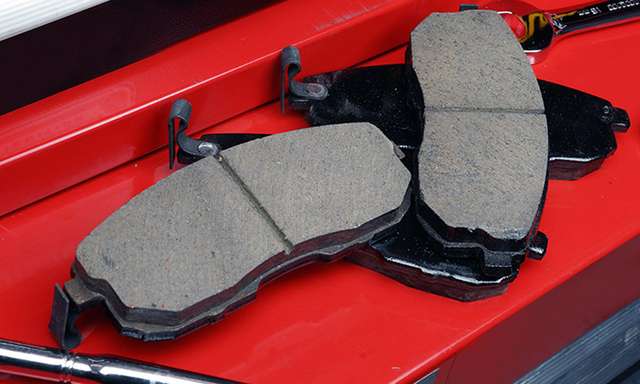- brakes
What are brake pads?

Updated 26 Mar 2023
Lindsay Saunders

When you boil it all down, there’s two things we really want our cars to do: stop and go.
To do the former, you’re going to need brakes, but just what is going on when you put your foot on the brake pedal?
Basically, your car’s braking system is employing friction to slow, and eventually stop, the wheels turning.
Creating friction means something is going to have to give and, in this case, it’s your brake pads.
Brake pads are on the frontline of your braking system.
When you push the brake pedal, the braking system engages and pushes the pads against the brake rotors, slowing that spinning.
As they do that job of converting the kinetic energy of the vehicle to thermal energy through friction, they, and the rotors, are put under enormous stresses and, over time, become worn.
This means that at some stage not only will your brake pads need replacing, the brake rotors will need maintenance too.
What Are They Made Of?
The actual material on the pad varies, not only historically but in application as well.
Just after World War I, for example, asbestos was added to pads because it dealt well with the heat that braking creates, as well as the drag braking exerts on a pad.
But when the serious health issues associated with asbestos came to light, alternatives that shared its braking properties had to be found.
Now, brake pads are usually classNameified as one of the following:
Non-metallic material (organic):
Usually made from a combination of synthetic substances bonded together, they can include cellulose and aramid and are considered softer than pads made of other materials.
While they are gentle on the rotors, they tend to wear faster than other types.
Semi-metallic material:
A mix of synthetics and flaked metal, these last longer, are more resistant to fade (that is, not working efficiently) and offer good performance for the price.
They are hard, which makes them durable, and they can cause more wear on rotors than other brake pad types.
Fully metallic materials:
You’re seeing where this one’s going, right?
Used only in racing vehicles, these pads are composed of sintered steel and are very long lasting, however they require more force to slow a vehicle and wear rotors fast.
They’re also noisy.
Ceramic materials:
A compromise between the durability of metal pads and the grip and fade resistance of organics, ceramics are clay and porcelain bonded to copper flakes and filaments.
They are durable and light, dissipate heat well and are exceptionally quiet.
They are, however, the most expensive option.
As you can see, nothing’s perfect when it comes to brake pads.
Advantages in one area mean disadvantages in others.
While you’re obviously not going to go for fully metallic pads in your daily driver, there are choices in pads that your vehicle style and use will dictate.
If you are towing a load you will also need to factor that in.
Brakes and their components are not something you want to experiment too wildly with for the obvious reason – you don’t want anything happening when you brake coming down the Great Dividing Range towing the caravan, now do you?
The best bet is to talk through your options with an expert.
With AutoGuru, you’ll find the people to do just that and ensure that when you want to stop, that’s precisely what you’ll do.

Written By
Lindsay Saunders
Lindsay Saunders has been writing, editing and producing words and photos for more than three decades, starting back when he drove a 1971 VW Type 3 fastback.
Now he’s got a Hyundai I30 diesel, a 1999 LWB Hi-Ace (camper project) and wishes his wife’s EJ Holden station wagon was actually his.
